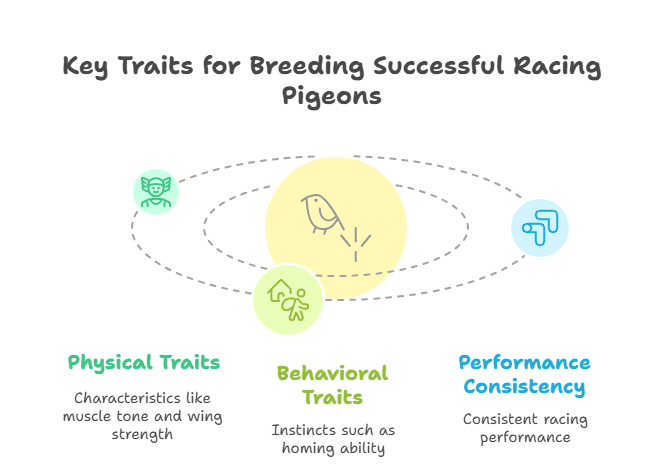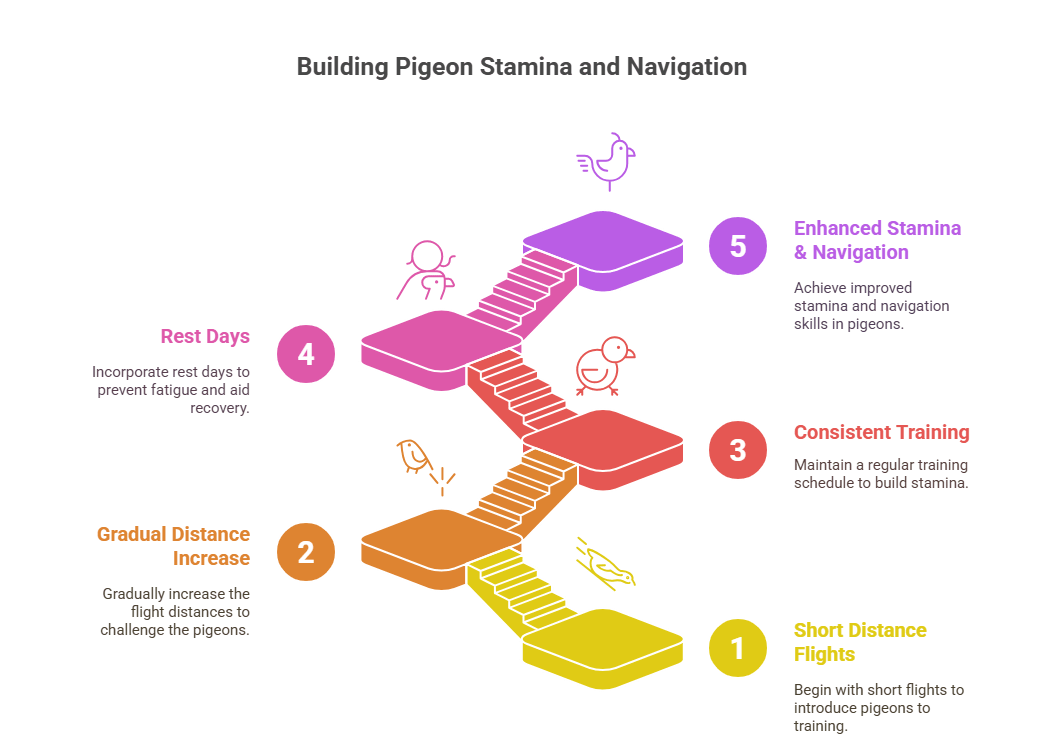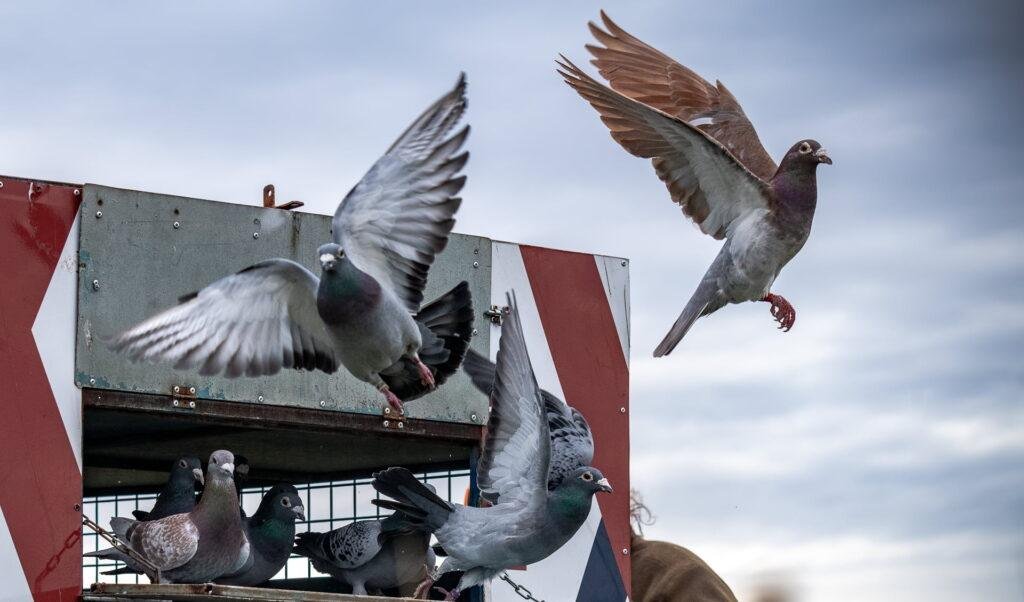Introduction to Racing Pigeons and Their Physiology
Racing pigeons, often referred to as “thoroughbreds of the sky,” have a storied history dating back to ancient times when they were used for carrying messages. Over the centuries, selective breeding has enhanced their natural abilities, making them invaluable in the competitive sport of pigeon racing. This sport, which gained significant popularity in the 19th and 20th centuries, requires pigeons to fly long distances, sometimes spanning hundreds of miles, to return to their home lofts as quickly as possible.
The physiological traits of racing pigeons are remarkable and specifically adapted for endurance and speed. Their powerful wings, capable of beating up to ten times per second, provide the thrust needed for sustained flight over vast distances. Additionally, racing pigeons possess an exceptionally large heart and efficient respiratory system, allowing for optimal oxygen distribution and stamina. These birds also have a highly developed sense of navigation, often relying on a combination of the Earth’s magnetic field, the sun, and visual landmarks to find their way home.
A typical 300-mile race for a racing pigeon involves meticulous planning and preparation by their handlers. The pigeons are transported to a release point, often in unfamiliar territory, and set free at a designated time. From there, they must navigate back to their home loft, encountering various conditions along the way. These conditions can include changes in weather, such as wind, rain, and temperature fluctuations, as well as potential threats from predators.

The structure of the race emphasizes the birds’ ability to combine speed and endurance. The fastest pigeon to return to its loft is declared the winner, and the times are recorded to determine rankings. This combination of competition and the natural abilities of the pigeons makes racing a fascinating study of avian physiology and endurance.
Energy Expenditure and Metabolism
The energy demands placed on a racing pigeon’s body during a 300-mile race are immense. As these avian athletes embark on such an arduous journey, their bodies must efficiently convert stored fats and carbohydrates into usable energy to sustain prolonged flight. This metabolic feat is achieved through a highly adaptive physiological process that ensures continuous energy supply.
During the initial stages of the race, pigeons primarily rely on their glycogen stores, which are a form of carbohydrate stored in their liver and muscles. Glycogen provides a readily accessible source of energy that is rapidly metabolized to meet the high energy demands of takeoff and the early phase of flight. However, glycogen stores are limited and can be depleted within a few hours of intense exertion.
As the race progresses and glycogen levels dwindle, pigeons shift their metabolism to increasingly rely on fat oxidation. Fat is a more abundant and energy-dense fuel source compared to glycogen. The process of fat oxidation involves breaking down stored fatty acids into smaller molecules that can be used for energy production. This metabolic transition is crucial for sustaining the pigeon’s energy levels over the long duration of the race.
Moreover, the diet of a racing pigeon prior to the race plays a significant role in its performance and endurance. A well-balanced diet rich in carbohydrates and fats ensures that the pigeon has ample glycogen and fat reserves to draw upon during the race. Carbohydrate loading before the race can maximize glycogen stores, while a high-fat diet can enhance the pigeon’s ability to oxidize fats efficiently.
In summary, the energy expenditure and metabolism of racing pigeons during a 300-mile race are intricate processes that involve a dynamic shift from glycogen utilization to fat oxidation. This metabolic flexibility, coupled with strategic dietary preparation, enables pigeons to endure and perform at their best over extensive distances.
Navigational Strategies and Sensory Adaptations
Racing pigeons employ a sophisticated array of navigational strategies to find their way home over extensive distances, such as a 300-mile race. Central to their navigation is the reliance on the Earth’s magnetic field. Pigeons possess magnetoreception, allowing them to detect the geomagnetic field and use it as a compass. This internal compass aids them in maintaining a consistent flight path towards their destination.

Equally important are visual landmarks. Pigeons have remarkable spatial memory and can recognize and remember significant landmarks along their route. These visual cues play a crucial role in their ability to navigate through complex environments. The position of the sun is another critical factor in their navigation. By gauging the sun’s position relative to the Earth, pigeons can adjust their bearings and maintain their course.
The sensory adaptations of racing pigeons are finely tuned to support their navigational needs. Their acute vision allows them to detect minute details in the landscape, enhancing their ability to identify landmarks. Moreover, pigeons have a heightened sensitivity to magnetic fields, which further bolsters their magnetoreception capabilities. This sensory prowess is matched by their mental and physical stamina, essential for processing navigational information over the grueling 300-mile journey.
Processing such a vast amount of information requires significant mental endurance. Pigeons must continuously integrate data from multiple sources, making real-time adjustments to their flight path. This cognitive load is supported by their physical capabilities, including strong cardiovascular and muscular systems that enable sustained flight over long distances. The synergy between their sensory adaptations and physical endurance is key to their success in long-distance races.
In summary, racing pigeons combine sophisticated navigational strategies with exceptional sensory adaptations to traverse long distances efficiently. Their reliance on the Earth’s magnetic field, visual landmarks, and the sun’s position, coupled with their acute vision and sensitivity to magnetic fields, underscores the remarkable interplay between mental and physical stamina required for such feats.
Physiological Stress and Recovery Post-Race
Racing pigeons, when participating in a 300-mile race, endure significant physiological stress, which manifests in various ways, including muscle fatigue, dehydration, and oxidative stress. Such an extensive distance requires sustained physical exertion, leading to notable muscle fatigue. The pigeons’ flight muscles, primarily the pectoralis major, suffer from repetitive contractions and exertion, resulting in the accumulation of lactic acid, which causes soreness and fatigue.
Dehydration is another critical factor impacting racing pigeons during a long-distance race. As they fly, they lose water through respiration and evaporation, which can lead to a decrease in their overall body weight and impair their ability to maintain optimal physical performance. Adequate hydration levels are essential to support their metabolic processes and sustain energy production.
Oxidative stress is a further challenge faced by racing pigeons. The intense physical activity increases the production of reactive oxygen species (ROS), which can damage cell structures, proteins, and DNA. This oxidative damage contributes to muscle fatigue and can impair the pigeons’ immune function if not adequately managed.
The recovery process for racing pigeons post-race is crucial to their health and future performance. Rest is paramount; it allows their muscles to repair and recover from the fatigue experienced during the race. Proper nutrition plays a vital role in replenishing the energy reserves depleted during flight. A balanced diet rich in carbohydrates, proteins, and essential vitamins and minerals helps in the repair and strengthening of muscle tissues.

Rehydration is equally important to counteract the dehydration experienced during the race. Providing clean, fresh water and electrolyte solutions can help restore their fluid balance and support overall physiological recovery. Additionally, antioxidants in their diet can help mitigate the oxidative stress incurred, promoting faster recovery and better immune function.
Proper care and management post-race are imperative to ensure the health and well-being of racing pigeons. Regular monitoring and timely interventions can significantly enhance their recovery, ensuring they remain in peak condition for future races. The combination of rest, nutrition, and rehydration forms the cornerstone of effective post-race recovery, safeguarding the longevity and performance of these remarkable avian athletes.

